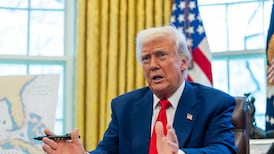US ECONOMY:THE US Federal Reserve attempted to tackle a rapidly weakening economy yesterday by freezing short-term interest rates for two years and opening the door to more quantitative easing, in a move that sent the dollar and Treasury yields sharply lower.
The rate-setting Federal open market committee said: “The committee currently anticipates that economic conditions – including low rates of resource utilisation and a subdued outlook for inflation over the medium run – are likely to warrant exceptionally low levels for the federal funds rate at least through mid-2013”.
The Fed added that it would “continue to assess the economic outlook” and was prepared to employ its policy tools “as appropriate” – a clear hint that it would consider further action.
The Fed statement triggered one of the sharpest moves in the Swiss franc in its history. The haven currency surged at one point by more than 6 per cent to touch a record high of SFr0.7085 to the dollar. The Japanese yen strengthened to Y76 versus the dollar, just below the level at which the Bank of Japan began a market intervention earlier this month.
In a sign of ferocious behind-the-scenes debate at the central bank, the decision passed by a majority vote of 7-3, reducing the clarity of the message to markets.
“There are three dissents and that is not really a vote of confidence for Ben Bernanke,” said Diane Swonk, chief economist at Mesirow Financial in Chicago. Such a large number of dissenting votes is highly unusual on the consensus-based FOMC.
Richard Fisher of the Dallas Fed and Charles Plosser of Philadelphia, both well-known monetary policy hawks, voted against the decision and they were joined by Narayana Kocherlakota of Minneapolis, who cast his first dissenting vote.
Stock markets appeared confused by the decision with the Dow Jones and the SP 500 both dipping sharply in the immediate aftermath only to surge over 6 per cent in the closing hour of the session.
European markets had staged a comeback earlier yesterday, ahead of the Fed announcement. The FTSE 100 ended the day up 1.9 per cent.
US Treasuries rallied sharply, indicating that markets were increasing their expectations of loose policy. Ten-year Treasury yields fell more than 25 basis points to 2.0346 per cent, a record low.
The extension of easing to 2013 already matched what traders were expecting, as measured by Fed fund rate futures, but the announcement of a time-frame was surprising.
“For the Fed to even passively precommit to a specific time-frame is a significant step,” said Michael Pond, interest rate strategist at Barclays Capital.
“Markets were expecting more, either some sort of new liquidity operation or perhaps a pre-announcement of QE3. The Fed left the door open but it did not want to appear to be panicking and responding to recent market moves.”
The Fed’s decision to take such robust action suggests that it was deeply worried by both weaker economic data and the slump in markets triggered by the European sovereign debt crisis and the Standard & Poor’s downgrade in the US credit rating from triple A to double A plus. – Copyright The Financial Times Limited 2011










